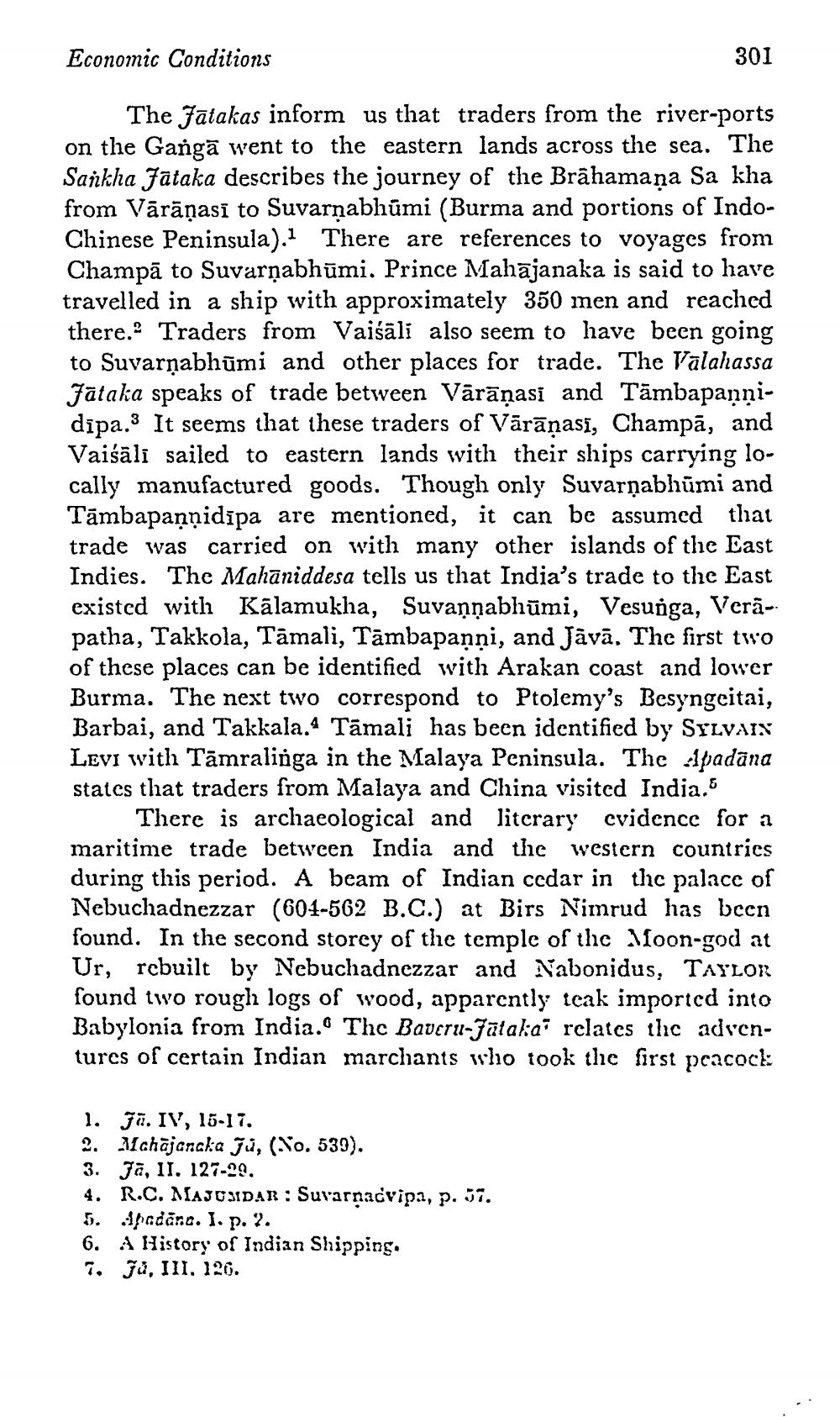________________
Economic Conditions
301
The Jatakas inform us that traders from the river-ports on the Gangā went to the eastern lands across the sea. The Sankha Jataka describes the journey of the Brāhamaņa Sa kha from Vārāṇasī to Suvarnabhūmi (Burma and portions of IndoChinese Peninsula). There are references to voyages from Champā to Suvarnabhūmi. Prince Mahājanaka is said to have travelled in a ship with approximately 350 men and reached there.? Traders from Vaiśāli also seem to have been going to Suvarnabhūmi and other places for trade. The Valahassa Jätaka speaks of trade between Vārāṇasi and Tāmbapannidipa. It seems that these traders of Vārāṇasī, Champā, and Vaiśāli sailed to eastern lands with their ships carrying locally manufactured goods. Though only Suvarnabhūmi and Tāmbapaņņidipa are mentioned, it can be assumed that trade was carried on with many other islands of the East Indies. The Mahāniddesa tells us that India's trade to the East existed with Kālamukha, Suvannabhūmi, Vesunga, Verapatha, Takkola, Tāmali, Tāmbapanni, and Jāvā. The first two of these places can be identified with Arakan coast and lower Burma. The next two correspond to Ptolemy's Besyngeitai, Barbai, and Takkala. Tāmali has been identified by SILVAIX LEVI with Tāmralinga in the Malaya Peninsula. The padāna states that traders from Malaya and China visited India.s
There is archaeological and literary cvidence for a maritime trade between India and the western countries during this period. A beam of Indian cedar in thc palace of Nebuchadnezzar (601-562 B.C.) at Birs Nimrud has been found. In the second storey of the temple of the lfoon-god at Ur, rebuilt by Nebuchadnezzar and Nabonidus, TAYLOR found two rough logs of wood, apparently icak imported into Babylonia from India. Thc Bavcru-Jataka: relates the adventurcs of certain Indian marchants who took the first peacock:
1. Ja. IV, 15-17. 2. Mchājancka Jū, (.Xo. 539). 3. Ja, II. 127-29. 4. R.C. MAJOMDAR : Suvarnacvipa, p. 57. 5. Spodãng. I. p. 2. 6. A History of Indian Shipping. 7. Ja, III. 120.




